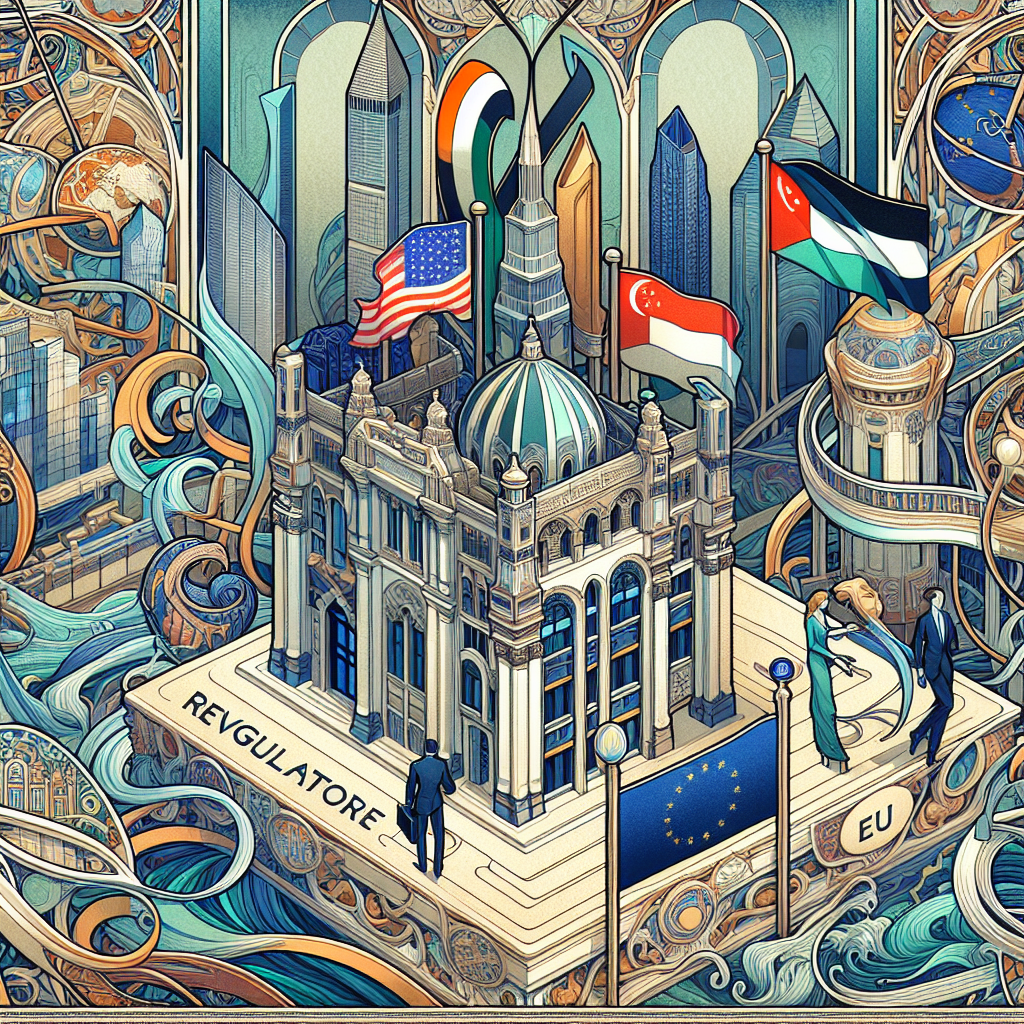The Great Regulatory Divergence: How Fragmented Global RWA Rules Create Arbitrage Opportunities for Smart Investors

In the rapidly evolving world of tokenized real-world assets (RWAs), there's one constant that smart investors can bank on: regulatory inconsistency. It seems global regulators can agree on RWA frameworks about as well as my grandmother can explain what I do for a living. ('So you sell digital houses on the computer?' No, Gran, for the tenth time...)
The Regulatory Patchwork: A Global Tour
As we navigate through 2025, the global regulatory landscape for tokenized RWAs resembles a patchwork quilt sewn together by a committee of competing tailors. Let's examine the key jurisdictions creating this fascinating tapestry of opportunity.
UAE: The Ambitious Innovator
The UAE, particularly Dubai, has positioned itself as the eager frontrunner in RWA tokenization. With proactive frameworks established by the Virtual Assets Regulatory Authority (VARA), the Emirates has effectively 'de-risked' many Web3 activities that other jurisdictions still view with suspicion.
Companies like Tokinvest now operate with full market licenses, benefiting from a regulatory environment that prioritizes innovation over restriction. The UAE's regulatory sandboxes actively foster experimentation that would make regulators in other jurisdictions reach for their anxiety medication.
Singapore: The Calculated Balancer
Singapore has crafted perhaps the most methodical approach, with the Monetary Authority of Singapore (MAS) implementing clear guidelines that thread the needle between innovation and protection. Their Project Guardian initiative has facilitated over 15 tokenization trials using various financial products across six currencies since 2022.
Singapore's framework provides explicit rules for creating, trading, and storing digital tokens, including licenses for exchanges and wallet providers. It's like they actually understood the technology before regulating it—a novel concept, apparently.
European Union: The Cautious Harmonizer
The EU, with its Markets in Cryptoassets (MiCA) framework, is attempting to create a unified approach across member states—a bit like herding cats, but with more paperwork. The European Commission's 2024 workshop on tokenization and the European Banking Authority's focus on tokenized deposits through 2025 signal a gradual warming to the sector.
While the EU offers strong investor protections, its complex compliance requirements across MiFID and GDPR create substantial operational overhead that smaller players struggle to navigate.
United States: The Strict Gatekeeper
The US remains the most conservative major market, with the SEC applying securities frameworks developed in the 1930s to blockchain technology—a bit like using a horse-and-buggy manual to regulate Tesla. However, recent appointments at the SEC (Paul Atkins) and CFTC (Perianne Boring) suggest a potential thaw in the regulatory winter.
The US approach creates the highest compliance costs but also potentially the greatest legitimacy for those who successfully navigate the registration gauntlet. Form S-1 registration is the holy grail for serious RWA projects seeking US market access.
Arbitrage Opportunities: Where Smart Money Flows
This regulatory divergence creates fascinating arbitrage opportunities for investors willing to navigate the complexity. Here are some specific examples:
1. Liquidity Premium Capture
Tokenized assets often trade at different valuations across jurisdictions based on regulatory overhead. The same tokenized real estate fund might trade at a 5-8% discount in highly regulated markets like the US compared to Singapore or the UAE due to compliance costs being priced into the asset.
Smart investors can purchase assets in highly regulated markets and sell in less restrictive ones, pocketing the regulatory premium difference while managing jurisdictional transfer requirements.
2. Access Arbitrage
Certain asset classes remain restricted to accredited investors in markets like the US but are available to retail investors in Singapore or the UAE. For example, tokenized private equity funds accessible only to accredited investors in the US might be available to retail investors in the UAE with lower minimum investment thresholds.
This creates opportunities for investment platforms that can legally aggregate retail capital in permissive jurisdictions to access opportunities restricted in others.
3. Time-to-Market Exploitation
Regulatory approval timelines vary dramatically across jurisdictions. While SEC registration might take 12-18 months, similar approval in Dubai could take just 2-3 months. This creates a window where early investors in favorable jurisdictions can establish positions before global accessibility drives prices upward.
Forward-thinking funds are now simultaneously pursuing regulatory approval across multiple jurisdictions, launching first where approval comes quickest while preparing for eventual global access.
4. Stablecoin Arbitrage
With stablecoins representing over 90% of the current $217 billion tokenized asset market, regulatory differences in their treatment create significant opportunities. USD-backed stablecoins might trade at slight premiums in regions where direct dollar access is restricted or costly.
By moving between different stablecoin implementations across jurisdictions, traders can capture small but consistent spreads while providing valuable liquidity to the ecosystem.
Market Size and Growth: The Numbers Don't Lie
The tokenized RWA market (excluding stablecoins) reached $15.2 billion in 2024, representing 85% year-over-year growth. Current projections suggest this market will reach at least $500 billion by the end of 2025 and is on track for a staggering $18.9 trillion by 2033—a compound annual growth rate of 53%.
With over $50 billion in tokenized real-world assets already on-chain, institutional players like BlackRock, JP Morgan, and Deutsche Bank are no longer just observing from the sidelines—they're actively participating in the tokenization revolution.
Navigating the Regulatory Maze: Practical Strategies
For investors looking to capitalize on these regulatory discrepancies, consider these approaches:
1. Jurisdictional Diversification
Establish investment vehicles or entities in multiple jurisdictions to maximize access to different regulatory environments. A properly structured Singapore entity can access opportunities unavailable to your US or EU vehicles.
2. Regulatory Monitoring
Develop systems to track regulatory developments across key jurisdictions. Regulatory changes can rapidly create or eliminate arbitrage opportunities, making timely information a competitive advantage.
3. Compliance-First Approach
While exploiting regulatory differences, ensure strict compliance within each jurisdiction. The largest opportunities exist not in circumventing regulations but in legally navigating their inconsistencies.
4. Infrastructure Partnerships
Form relationships with regulated entities across multiple jurisdictions. Having established partners in the UAE, Singapore, EU, and US creates a network that can facilitate regulatory-compliant arbitrage strategies.
The Future: Convergence or Continued Divergence?
While some predict eventual regulatory harmonization, the evidence suggests continued divergence at least through 2025-2027. Different cultural, economic, and political priorities will likely maintain significant regulatory gaps for the foreseeable future.
This persistent divergence means that arbitrage opportunities won't disappear anytime soon. Instead, they'll evolve as regulators continually adjust their approaches in response to market developments and competitive pressure from other jurisdictions.
In conclusion, the regulatory patchwork isn't a bug in the system—it's a feature that creates opportunities for informed investors. While my grandmother may never understand what tokenized RWAs are, smart investors should recognize that regulatory confusion is creating one of the most significant alpha-generating opportunities of this decade.
And remember, in the world of regulatory arbitrage, the early bird doesn't just get the worm—it gets the worm before it needs to file a Form S-1 declaring its intention to capture said worm.




